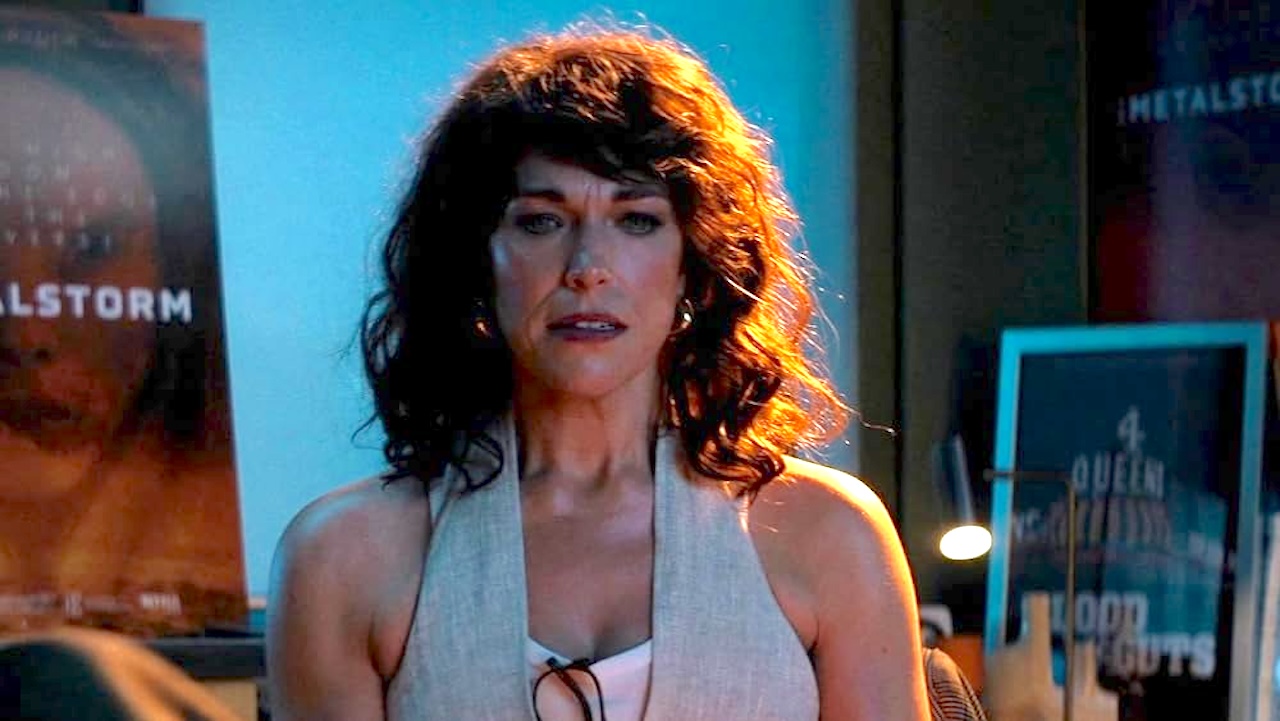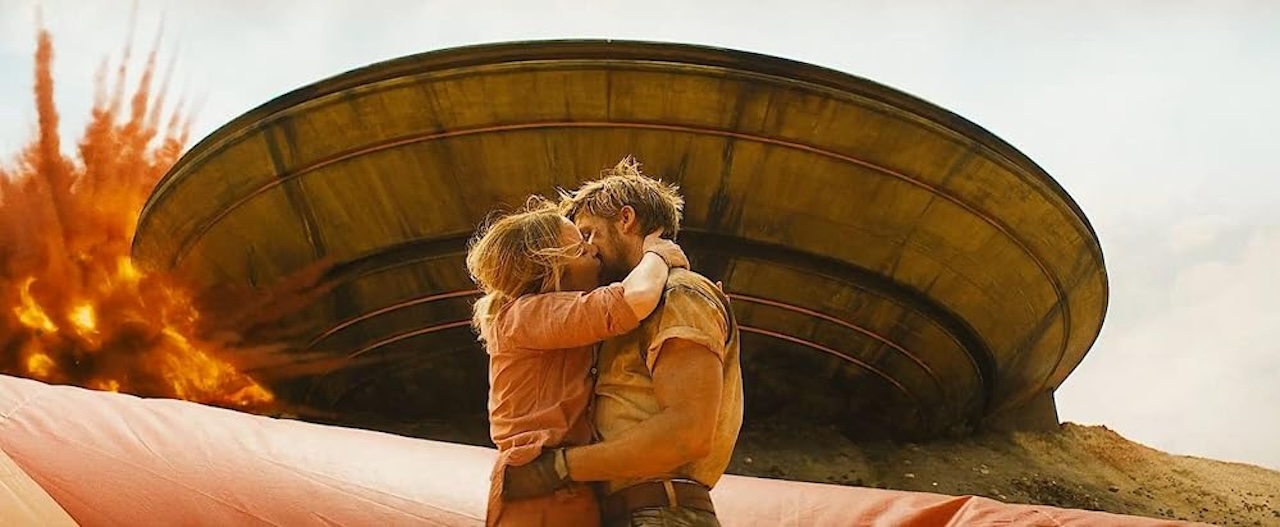“I didn’t really know I was allowed to be a screenwriter, so I didn’t consider that as a career or life option growing up Southeast of England,” says Drew Pearce. “People I knew didn’t go to university and they definitely didn’t work in movies.”
“Throughout my life, I have shown a staggering lack of imagination in thinking I can do these jobs. But when I meet a person who does the job, I do think, ‘Well, if they can do it, I can do it,’” he jokes. After exploring paths as a musician, a magazine writer, and the comic scene, he eventually created a sitcom called No Heroics in the UK.
The show received mixed reviews in the UK, but found its way to America where it found some traction. “I just so happened to do a show about off-duty superheroes, set in a pub, the same year that Iron Man came out, so those things dove-tailed.”
Thanks to the show, this eventually led to a meeting with Kevin Feige (President of Marvel Studios) and work on projects such as Iron Man 3, Marvel One-Shot: All Hail the King, Mission: Impossible – Rogue Nation, Lego Marvel’s Avengers, Hotel Artemis, Fast & Furious: Hobbs & Shaw, and most recently, The Fall Guy.
“Kevin Feige forced us together,” he says about his collaboration with Shane Black. “Legendary screenwriter Shane Black did not want me as a co-writer,” he jokes. “It was an arranged marriage that could have been incredibly short-lived. Shane was the director so he had the power to fire me, but I had grown up with Shane’s movies and there’s a huge part of what I do.”

Drew Pearce. Photo by Dave Bennett
“But honestly, there was an organic exchange of tones. He liked that I came from comedy and I liked how American his stuff is.” Black’s credits also include Lethal Weapon, The Last Boy Scout, The Long Kiss Goodnight, Kiss Kiss Bang Bang, The Nice Guys, and The Predator.
“Weirdly, like two characters in a Shane Black movie — the grizzled old veteran and the arrogant younger copy — we learned from each other and a bond was formed.” That said, over the last fourteen years, Pearce has written or worked on over sixty movies, including unproduced specs, but he’s only known for the action-comedies listed above.
Writing The Fall Guy
In 1981, Lee Majors was The Fall Guy. The ABC series followed a Hollywood stuntman named Colt Seavers who moonlights as a bounty hunter. The adaptation, starring Ryan Gosling, is a bit different.
“I got pulled in four and a half years ago, which is remarkably quick for a big movie. I had worked with David Leitch (Bullet Train, Atomic Blonde) on a few movies — only one the world knows about — so he and I had a good relationship.”
Pearce wasn’t interested in doing something like Starsky and Hutch or Baywatch on the big screen, but he was a fan of the series. “I adored The Fall Guy as a kid. I watched it on Saturday nights with my dad and I even had a special stunt course I built in my backyard.”
“I had a love of the material, but when I said ‘yes,’ I basically threw out all of the TV show. I kept a truck. I kept a stuntman. But I think we also kept the fast-and-loose nature of the show, so I think that’s still in the movie. But, the clue was in the name, so we hid the twist in the IP’s title, which felt like a fun way to get to the idea.”
This was the origin of the idea, in the same way that “bad guy hospital” was the origin to his last film Hotel Artemis (read that interview here). “For this one, the North Star became the romance, but my starting point was this universal thing that I’m always looking for what makes the best underdog.”
The link between the stuntman and the underdog is the “lack of acknowledgment” for their work. Pearce adds, “I’ve always loved blue collar 70s and 80s heroes. That’s what I wanted to tap into — people who don’t really take the credit. It seems to me a very noble thing.”
Working with David Leitch
Before stepping into the director’s chair, David Leitch was a stuntman for Brad Pitt five times, twice for Jean-Claude Van Damme, and Matt Damon multiple times. In this love letter to stunts, Leitch wanted to focus on realism, but also spectacle.
“I loved the idea of smuggling a small human story into a big trojan horse of explosions and stunts. That felt exciting to me, but I always try to Trojan horse something into the bigger movies I do. Like humanity and a love story or blue collar nobility. Those felt like big things for a big summer movie.”
“One thing I said to Dave, when I said I would do the job, was that I wanted to make the ultimate David Leitch movie. I said, when they do the ‘in memoriam,’ I wanted to be the one they lead with — which is quite a strange thing to say to your friend, but ultimately, I think he understood.”
This was also a guide in writing the screenplay to keep thinking about what the best movie was for David Leitch. “That’s an old fashioned way of screenwriting that people don’t get to do anymore. It’s rare to have a locked creative team from beginning to end like this.”
Leitch was always the director. Pearce was always the screenwriter. Gosling was always the star. “When you have the same creative from beginning to end, you can also sort of circle the wagons to protect the weirdness. I think that’s really useful.”
The Relationship to Death
In terms of tone, Pearce thinks a lot about the relationship to death in the films he writes. As an example, John Wick kills everyone, so it’s a bit like a video game, whereas Indiana Jones, the violence is old western style, where any deaths at all would take place off screen.
“I was working with Robert Downey Jr. on Iron Man 3 and we wanted there to be an element of revenge as his engine.” In the final version, Tony Stark’s best friend Happy Hogan (Jon Favreau) is injured, but Black and Pearce did consider killing him off.
“That’s a very Shane instinct. He’s very hard-boiled and it made sense, but I remember being in the room with Robert. He made this face and he could tell Shane and I were giving each other a side eye.” Then Downey said something truly eye-opening that changed Pearce and Black’s perspective.
RDJ (as told by Pearce): “Here’s what you have to remember. I have to spend the next hour and a half of screen time being charming or funny or angry, but a lot of time telling jokes. If you’re asking me to authentically play the death of my best friend for an hour and a half of an Iron Man movie, it’s going to be a very different movie. And I don’t think that’s the right move.”
Pearce continues, “I had never really thought about it like that before. It’s less about dialogue and more about what you’re trying to do. Going into The Fall Guy, I said, ‘Let’s play the hits. Let’s make this a fist-pump of a movie. If that’s what we’re trying to do, that gives us a notion of where the movie sits, tonally.”

Gail Meyer (Hannah Waddingham) Photo courtesy of Universal Pictures
“Realism is about where you take your claim to reality,” says Pearce. “That’s how you would maybe define tone. The dark way I would define tone is, ‘What is the movie’s relationship to death?’ That is usually a pretty good way of working out what your tone is. Even with a shootout, there can be a lightness to the scene.”
The Prolific Writer
“I would never want to push anyone to be prolific. I think you should take the amount of time you need to write. That said, every word in your script may change. It might not. It might be verbatim, but every script has a reason. Sometimes we assume the reason for a script is because those words will ultimately form a movie, but I don’t think that’s true.”
Pearce essentially believes there are different drafts for different reasons. “Sometimes, the reason for a script is that you need to get an actor on board. Sometimes, it’s for a movie to get greenlit. Sometimes, it’s because we just brought on a new stunt designer and I want him to feel excited. A script is the vehicle to get people interested in the bigger thing — and you do that by getting them excited internally.”
“I think not being precious when you’ve finished a script is important when it comes to being prolific. I have a tattoo on my right hand and it’s Final Draft Courier Size 12 and it just says ‘The End.’ And it’s because that’s the only goal when I start a draft. The script doesn’t exist until it’s actually finished. Even if it’s shit, I can rewrite it, but it doesn’t exist if I stop ten pages before the end. Get to the end, that’s a huge part of it.”
“For me, the way I write a script fast and get less intimidated with the act of writing is with preparation. I outline movies to within an inch of their life and I beat the shit out of an outline. It’s not for anyone else to see. By the time I start writing, my outline is between 30 and 40 pages long. It’s every scene I want to do, exactly what happens, the beginning, the end, so by the time I’ve gotten there, it’s terminal velocity. I’ve built up and built up and built up, cleared the deck schedule-wise, and then I can fire myself out of a cannon, because I’ve spent all that time on the outline.”
This interview has been condensed. Listen to the full audio interview here.

